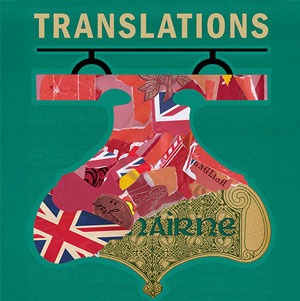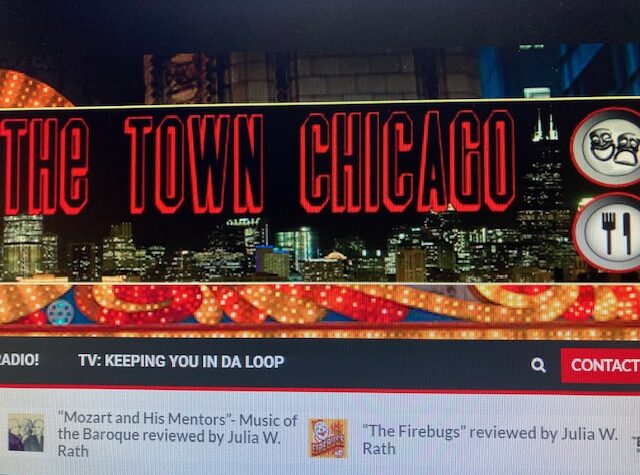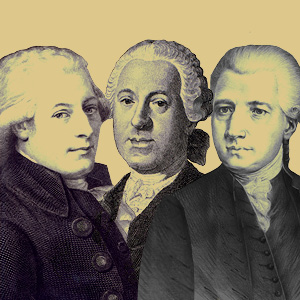 [rating=4]How do we mark the passage of time? Puppeteer Tom Lee explains this in his one-of-a-kind solo puppet show “The Great Zodiac Animal Race” as part of Eighth Blackbird’s Chicago Artists Workshop (CAW) series this past weekend in honor of the Lunar New Year (a/k/a Chinese New Year). His original script is transformed into a uniquely inventive live-streamed event that took place on Friday, February 26, 2021, with a recorded version available for remote viewing on February 28th and March 1st. Originally crafted as an ensemble for four puppeteers, “The Great Zodiac Animal Race” had to be re-imagined as a result of the COVID-19 pandemic. With social distancing requirements creating a challenge, Lee re-figured the show to be a one-man performance. Thus he relies heavily on a style of Japanese puppetry called kuruma ningyo, which features single-person operated puppets, as distinguished from traditional Japanese style puppetry (Bunraku), where three people manipulate one puppet.
[rating=4]How do we mark the passage of time? Puppeteer Tom Lee explains this in his one-of-a-kind solo puppet show “The Great Zodiac Animal Race” as part of Eighth Blackbird’s Chicago Artists Workshop (CAW) series this past weekend in honor of the Lunar New Year (a/k/a Chinese New Year). His original script is transformed into a uniquely inventive live-streamed event that took place on Friday, February 26, 2021, with a recorded version available for remote viewing on February 28th and March 1st. Originally crafted as an ensemble for four puppeteers, “The Great Zodiac Animal Race” had to be re-imagined as a result of the COVID-19 pandemic. With social distancing requirements creating a challenge, Lee re-figured the show to be a one-man performance. Thus he relies heavily on a style of Japanese puppetry called kuruma ningyo, which features single-person operated puppets, as distinguished from traditional Japanese style puppetry (Bunraku), where three people manipulate one puppet.
This is the Year of the Ox according to the Chinese zodiac, and Lee’s show is appropriately themed for the occasion. Various mythological traditions indicate that the ox became the second animal in the zodiac as a result of a race of all the animals that was held by a great deity. The race was run, and the ox was initially supposed to be the first to cross the finish line. But at the last moment, the rat cajoled the ox into giving it a ride across a river, and when it subsequently jumped off the ox’s back, the rat became the first animal to win the race. It was immediately followed by the ox. In his performance, Lee captures this race and other myths about the various animals that constitute the zodiac, infusing humor and whimsy in ancient tales surrounding the origins of the lunar calendar and its representation.
Utilizing a light table, an overhead camera, a computer, and a waterbox, Lee combines digital and live animation in real time. In addition to handling all of the puppet movements himself, he plays various Asian-themed musical instruments, such as bells and chimes, to accompany the action. The slick integration of plasticized paper cutouts and brilliantly-conceived computerized graphics creates an atmospheric that has an ancient feel, yet is very contemporary. My favorite sequence was seeing words written in multiple languages morphing into stylized paper cutouts of animals that make up each of the twelve houses of the 12-year-cycle zodiac wheel.
Simply watching what the overhead camera records from above the light table does not fully capture the mechanical operations of the puppetry. The producers recognized this, so from time to time the recorded video presents a square in the corner of our computer screen to indicate how Lee manipulates his puppets and his animation. Unfortunately, we can’t see all the hard work and coordination involved in putting on such an intricate and complex show. For example, we miss seeing how Lee interacts with his puppets across the multiplanes of plastic layers that make up the light table and how he moves quickly from one end of the table to the other. Then too, we miss watching exactly how he adds the sound effects, music, and digital artistry throughout. From the perspective of the virtual audience, things look very smooth and cohesive, but it takes a tremendous amount of effort to accomplish this well.
At the end of the main part of the show, KT Shivak emerges with her creation: a giant papier mache head of an ox, beautifully crafted with soulful hand-painted eyes, to represent the coming year.
During the aftershow, Lee explains that the story came out of the celebration of Chinese traditions in his own family. “My father is Chinese-American,” he says and then explains that he was exposed to a lot of Asian-inspired puppetry and music when he grew up in Hawaii. Since the age of 16, he has worked with Japanese puppetry on the Big Island.
In all, this was a highly enjoyable presentation. The prologue that starts the 25-minute performance, “Once upon a time, there were no cellphones and no calendars…” is something that we all need to reflect upon—in our workaday world. As Lee’s show brings to the fore, time is more like a wheel than a straight line, with a constant rotation over which we have no control. Although the wheel always returns to the same place in the rotation, it propels us forward to a new and different place in the journey we call life. Both Western and Asian astrological traditions teach us that our choices are influenced by energies beyond explanation, which the ancients ascribed to the animals of the zodiac. If there is any one message behind “The Great Zodiac Animal Race”, it is this: Perhaps best to leave considerations of fate and free will to the Heavenly Grandfather (or Father Time) as our stars rise and fall in the universe.
“The Great Zodiac Animal Race” was created by Tom Lee, who also serves as its writer and director.
Music by Tatsu Aoki, Jamie Kempkers, and Rami Atassi
Great Ox Maker/Puppeteer – KT Shivak
Shadow Puppet Design (papercuts) – Jaerin Son
Additional Puppet Design – KT Shivak, Jaerin Son, Mark Blashford
The show was introduced by Lisa Kaplan and Matthew Duvall and staged at the Eighth Blackbird production facility located at 4045 N. Rockwell Street, in Chicago. Remote viewers were able to tune into the production via the Eighth Blackbird’s website and YouTube. Tickets were $20 each, but options included choosing a price as well as becoming a supporter of the organization.
For more information about this and future shows, please go to https://www.eighthblackbird.org/product-category/caw-tickets.
Note: The production was originally devised by the Chicago Puppet Studio with special thanks to the Chicago International Puppet Festival, Blair Thomas, and The Art Institute of Chicago.






More Stories
Finding Paul Lisnek
“Mozart and His Mentors”- Music of the Baroque reviewed by Julia W. Rath
Our Milwaukee “Staycation” 2025!